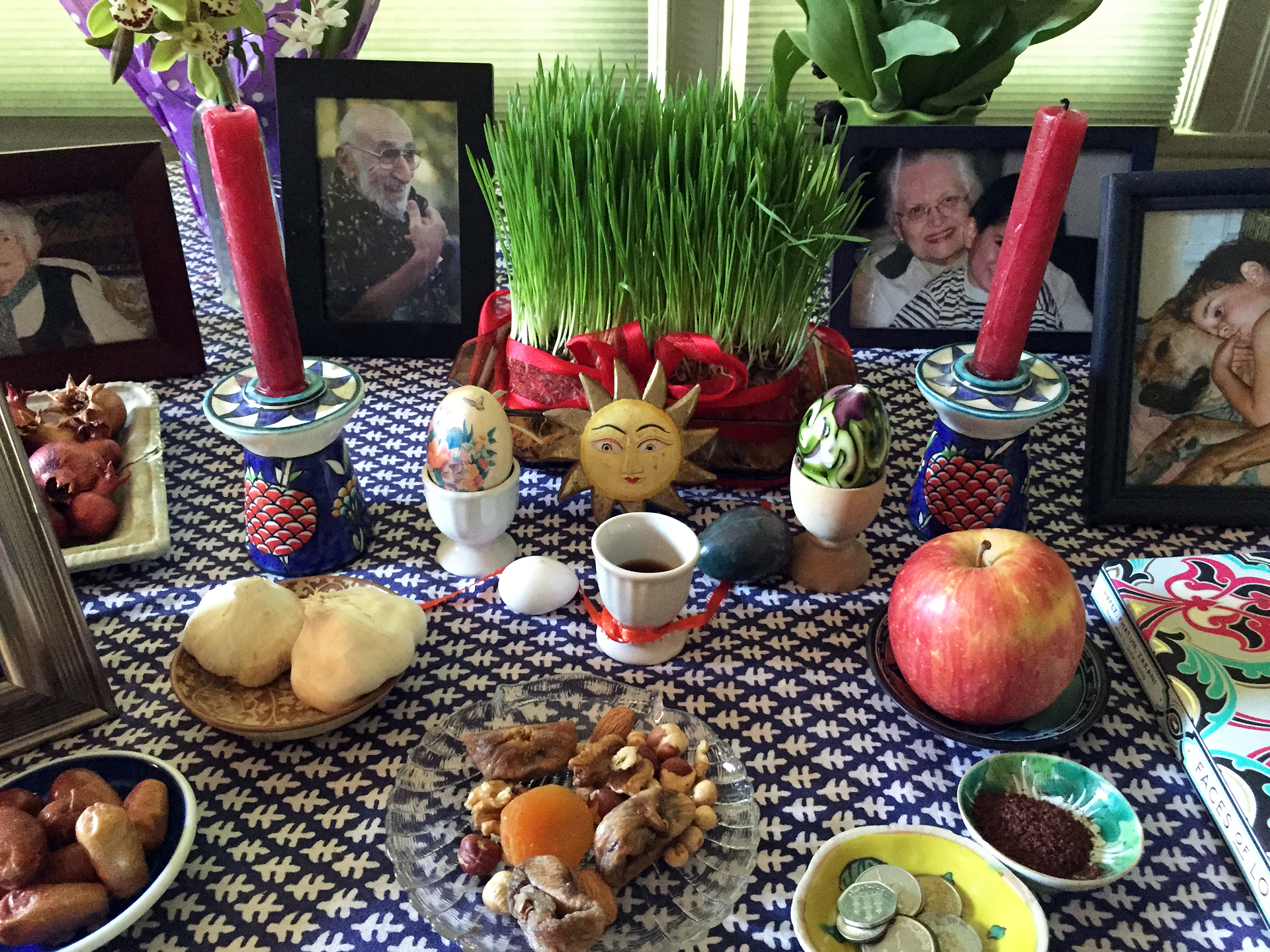
The Seven Edible ‘S’ Foods of the Persian New Year
Iranians, Pakistanis, Afghans and many other cultures celebrate the Persian New Year, or Nowruz on the first day of the Spring Equinox. This year Nowruz is on Thursday, March 19 (updated 3/20/2020) and the celebration continues for 13 days. Families across the world elaborately decorate a table in their home with different foods, each symbolizing something good to come in the new year. This table decoration, called a haftsin, is a tradition that dates back at least 1,000 years to Zoroastrian traditions. ‘Haftsin’ means the 'seven ‘s.'' People decorate tables with seven different foods that start with the letter ‘s,' the number seven symbolizing the seven days of Creation.
The first ‘s’ is sabzeh: lentil, wheat are barley sprouts that you grow on a dish. The symbolize rebirth and renewal and have to be prepared a week or two before Nowruz so that they will have sufficiently sprouted. Here's a link on how to grow sabzeh yourself. Or, you can do what I did in college and just buy a chia pet online a few weeks before Nowruz. And yes, ch-ch-ch-chia pets still exist.
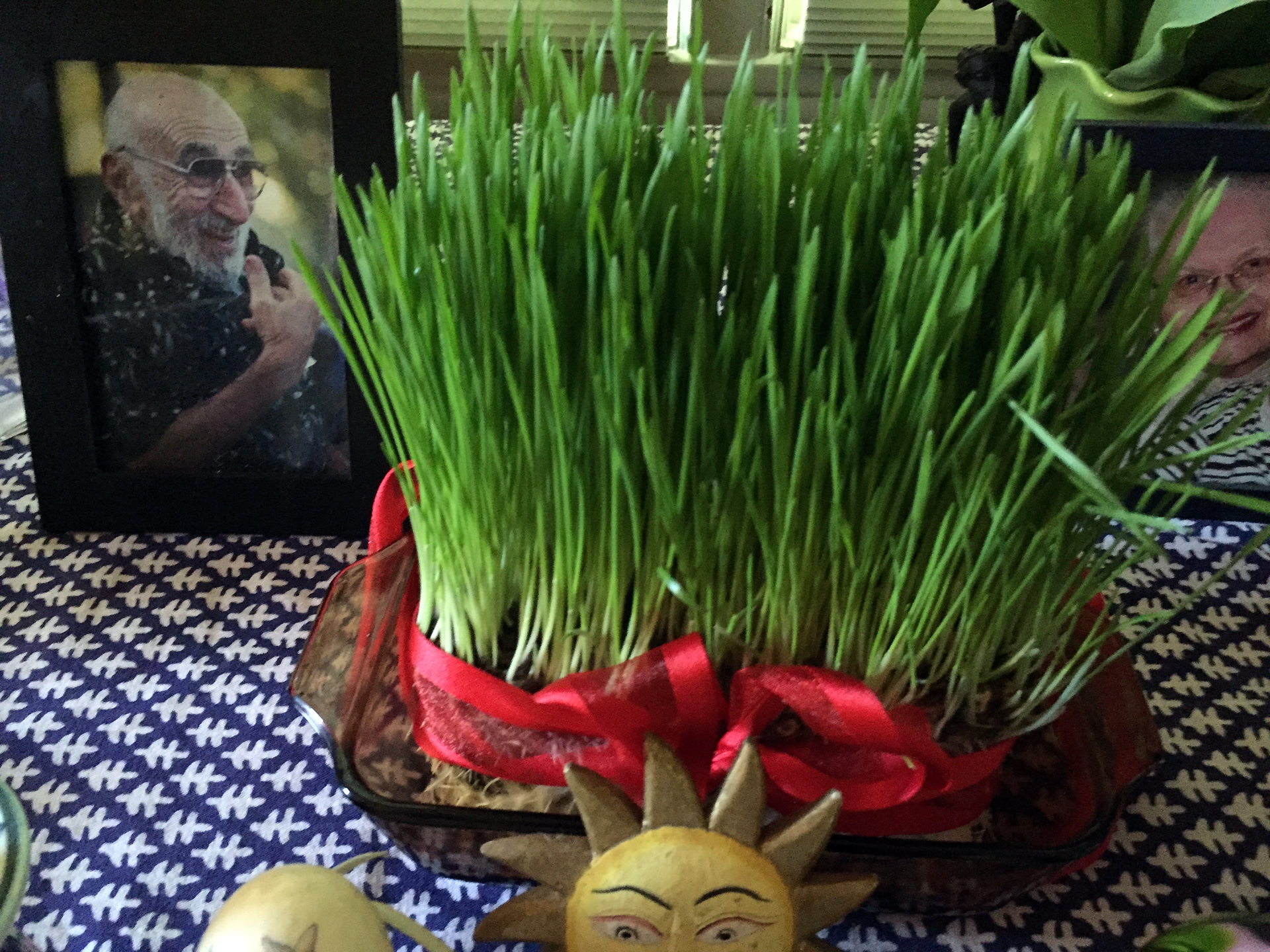
Another 's' item is serkeh (vinegar), which represents age and the patience that comes with it. Seeb (apples) are displayed for health and beauty; seer (garlic) for medicine; samanu is a sweet, yellowish brown pudding made with wheat germ and represents affluence. Somaq (sumac) is a bright red berry that comes in spice form and is a staple in Iranian kabob dishes. The spice symbolizes the colors of the sunrise. The last ‘s’ on the table is senjed, dried fruit from an oleaster tree that symbolize love.
Modern Nowruz tables also have dyed hard-boiled eggs symbolizing fertility (usually decorated by the children in the family), dried nuts and berries for guests to eat, and few non-edible items: a goldfish representing life and the sign of Pisces coming to an end, a mirror representing the imagery or reflection of creation or God, gold coins for wealth and a purple hyacinth flower to symbolize the coming of spring. The last item on the table is a book of Hafez poetry, or a Koran for religious people.
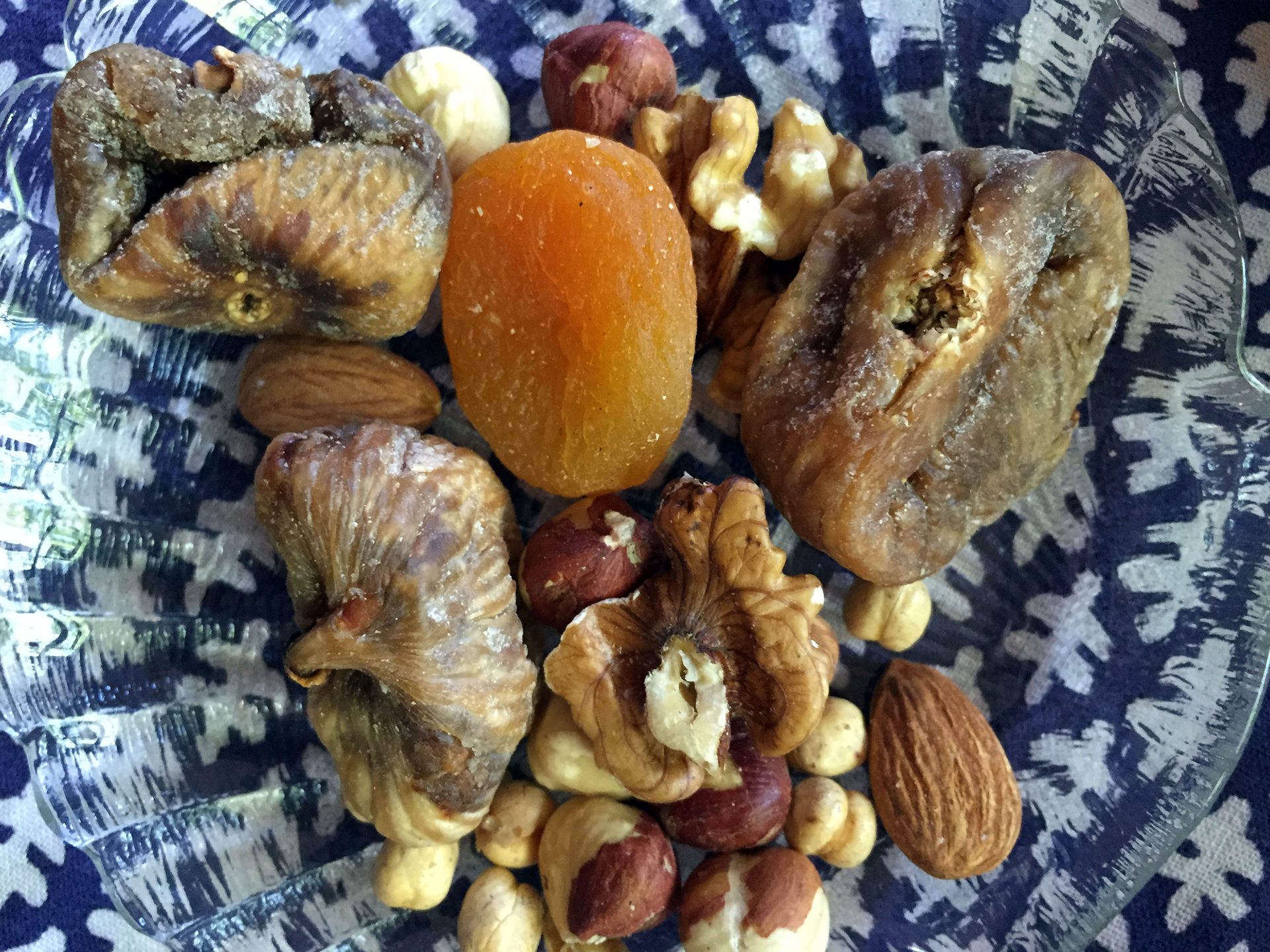
“Poetry is like the bread of life, the emotional and spiritual bread of life is poetry. So I think it belongs on a haftsin table because it sustains us through good times and bad," says Persis Karim, a professor at San Jose State University and the co-director of its Persian Studies Program. Karim, whose also the editor of many anthologies of Iranian-American fiction writers, says she always has a book of poetry on her haftsin table.
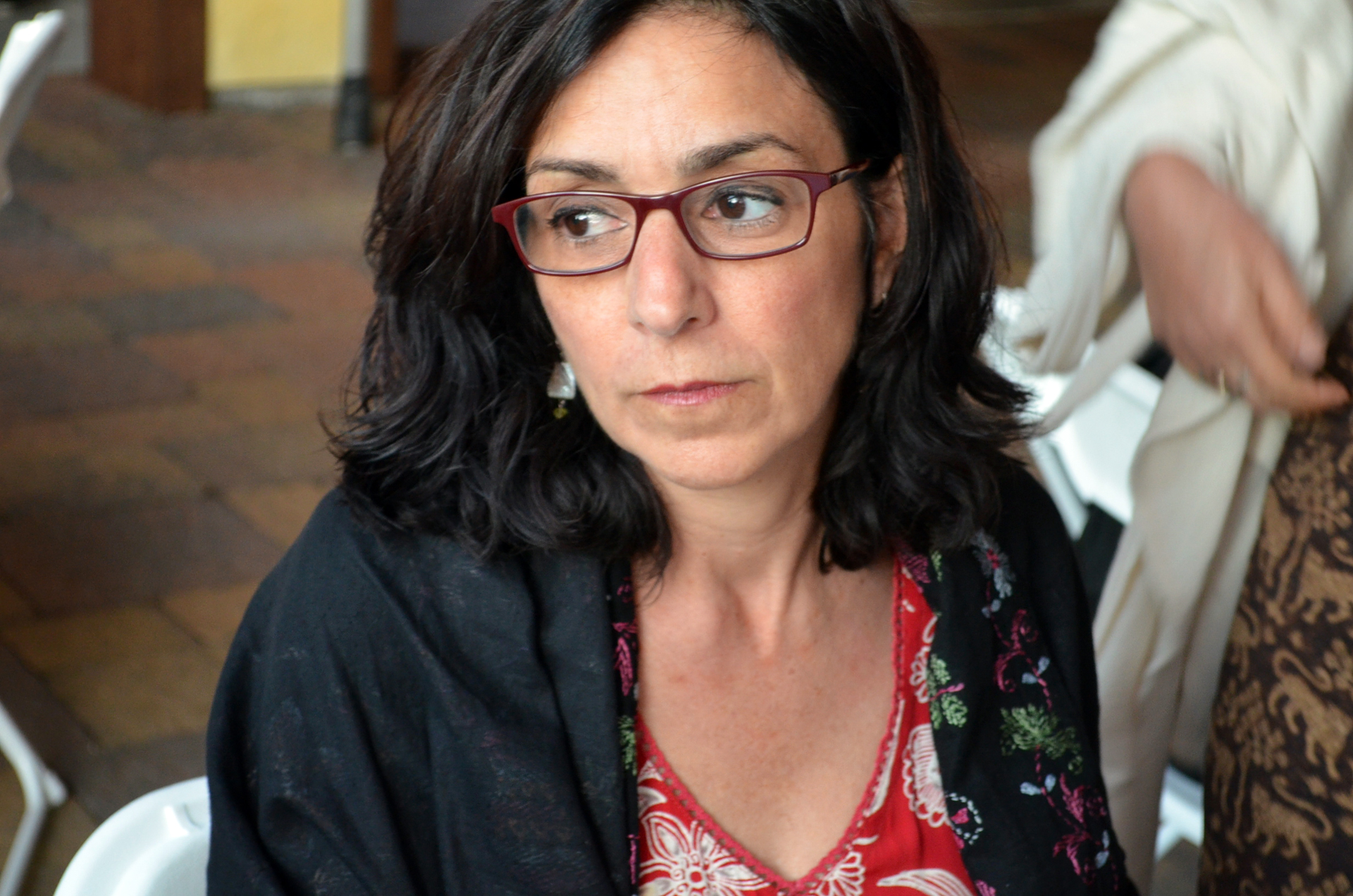
Following Iranian tradition, Karim opens the book of poetry to a random page -- a way of telling your fortune for the new year. The Hafez poem she lands on is about Spring. “A flower, without a friend's face there, I think isn’t good. And springtime without wine, I think isn’t good.” Hafez lived over 1,000 years ago, but he was a smart man.
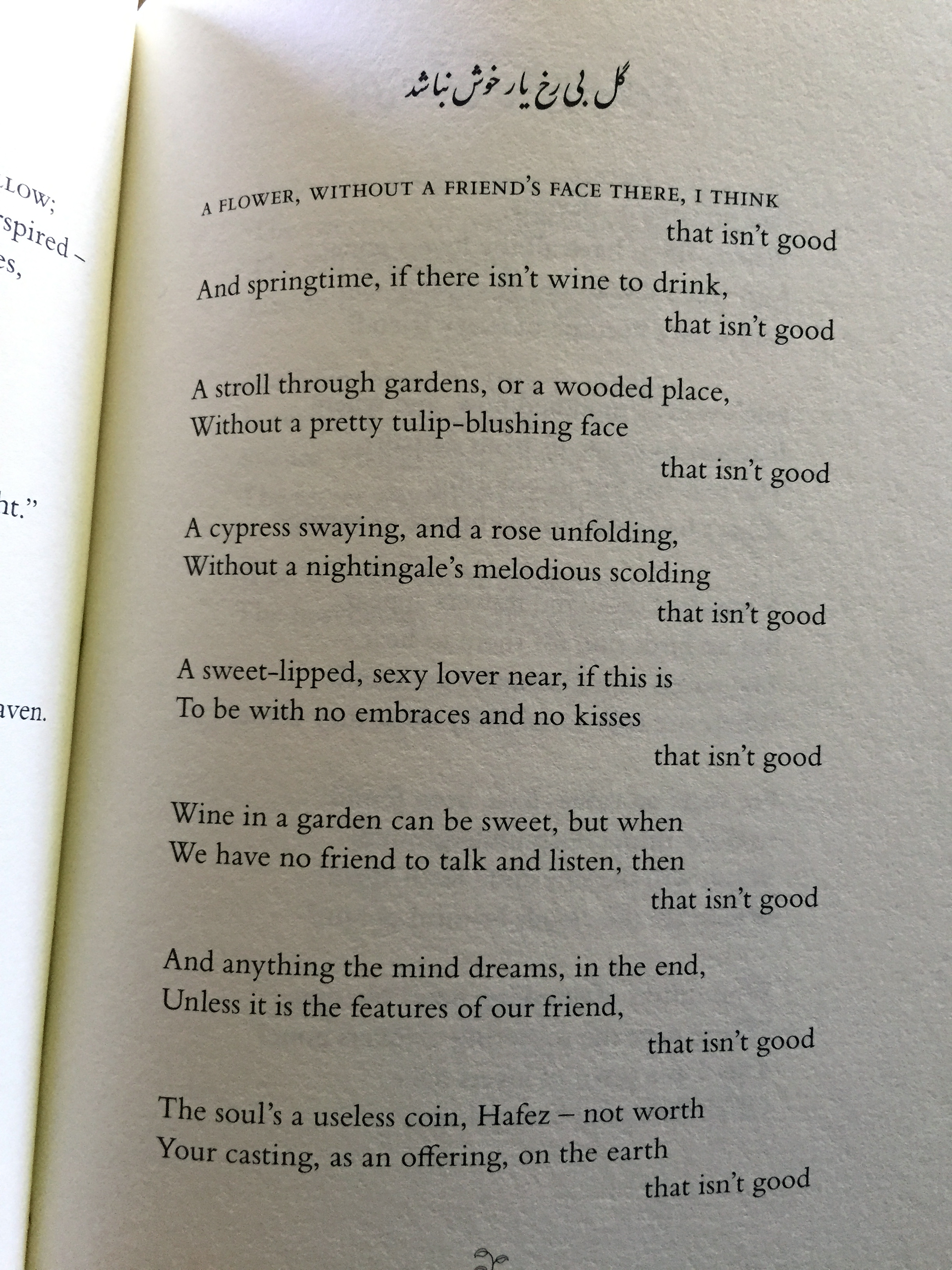
Karim's Nowruz table is a mix of traditional and non-traditional. She's French-Iranian and grew up in the Bay Area, so she's made the tradition her own by including an altar on her haftsin table to honor family who have passed away. "It’s a recognition of the arrival of Spring. It’s a bittersweet recognition that we go on even without the people we love but we find a way to commemorate their presence in our lives. This is an altar to life."
Most of the food on the haftsin table is decorative -- you don't eat them, except for the hand-painted hard-boiled eggs. When Persian New Year arrives, families get together and play the ‘egg-cracking game.’ You hold an egg in the palm of your hand and hit it against another person’s egg, which she's holding in her palm. If your egg cracks, you lose. If it doesn’t, you go on to the next person. The last person with an uncracked egg wins, meaning they'll have the best fortune in the year to come. There are methods to winning this game that I will not reveal in this blog post, but I will say that I learned that it’s ok to eat a hard boiled egg that’s been sitting out in a cool, dry place for a few days. Karim uses glass eggs, but here are some pictures of the elaborate egg art work done by my five and seven year old nephews at my sister's haftsin table in Santa Cruz.
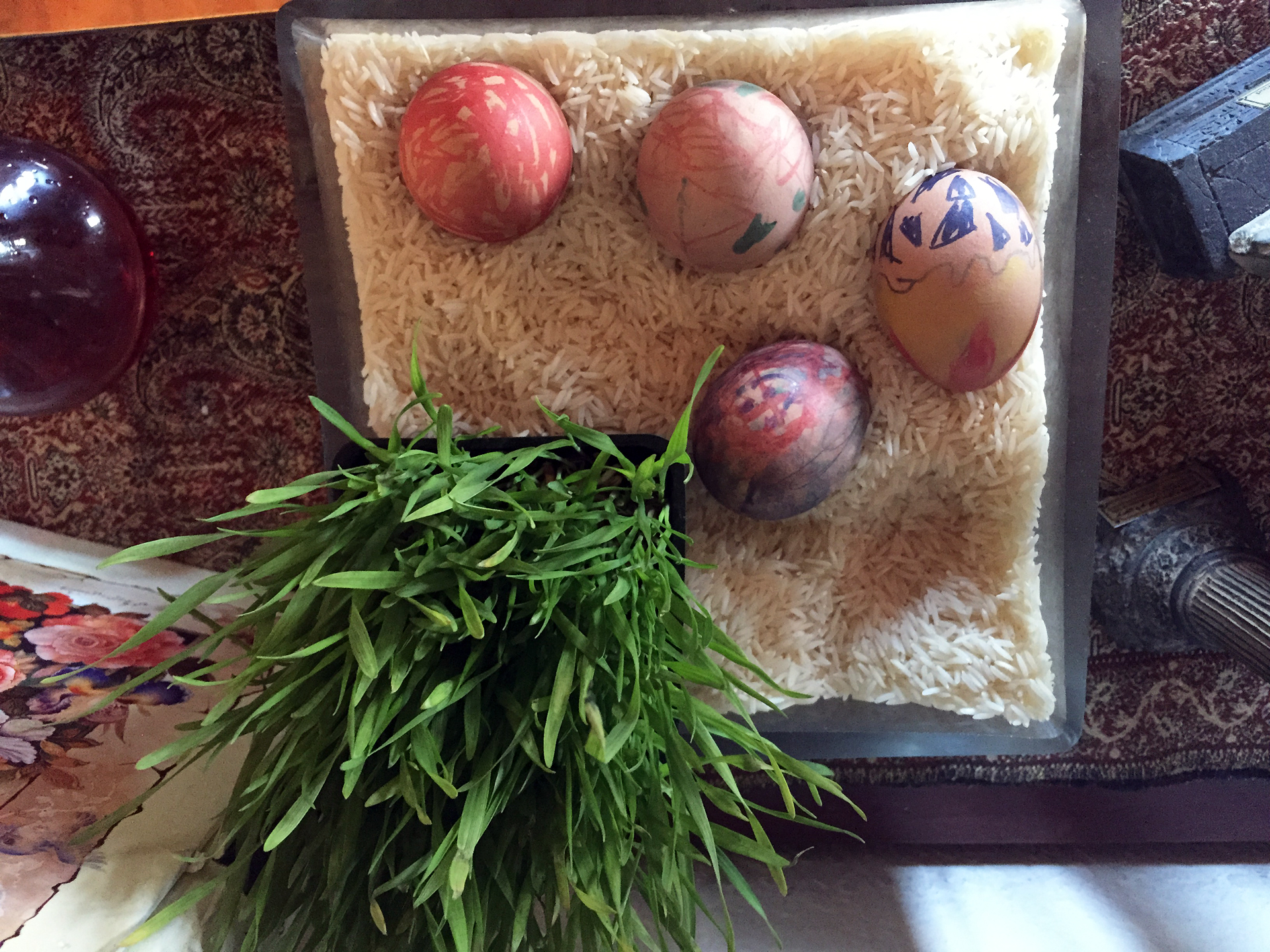
Throughout the 13 days of the Persian New Year, friends and family gather each day at the home of a different friend or family member, and eat a lot of Persian food. One staple dish is Sabzee Polo Mahee, a Persian herb rice with baked fish. Persis Karim says though Nowruz and the haftsin are centered around food, the holiday is ultimately about reflecting on the past year and preparing for the new year.
"I think it’s one of the most beautiful holidays because it’s all about connecting with the season," Karim says. "It's a reflection of who we have become from one year to the next."
Recipe: Sabzee Polo (Herb Rice)
This rice is traditionally eaten with Mahee Sefeed, or Whitefish, which comes from the Caspian Sea on the northern Iranian coast. That's hard, if not impossible, to find in the Bay Area, so my family usually bakes salmon and trout with lemon and oil. The special part is the herb rice.
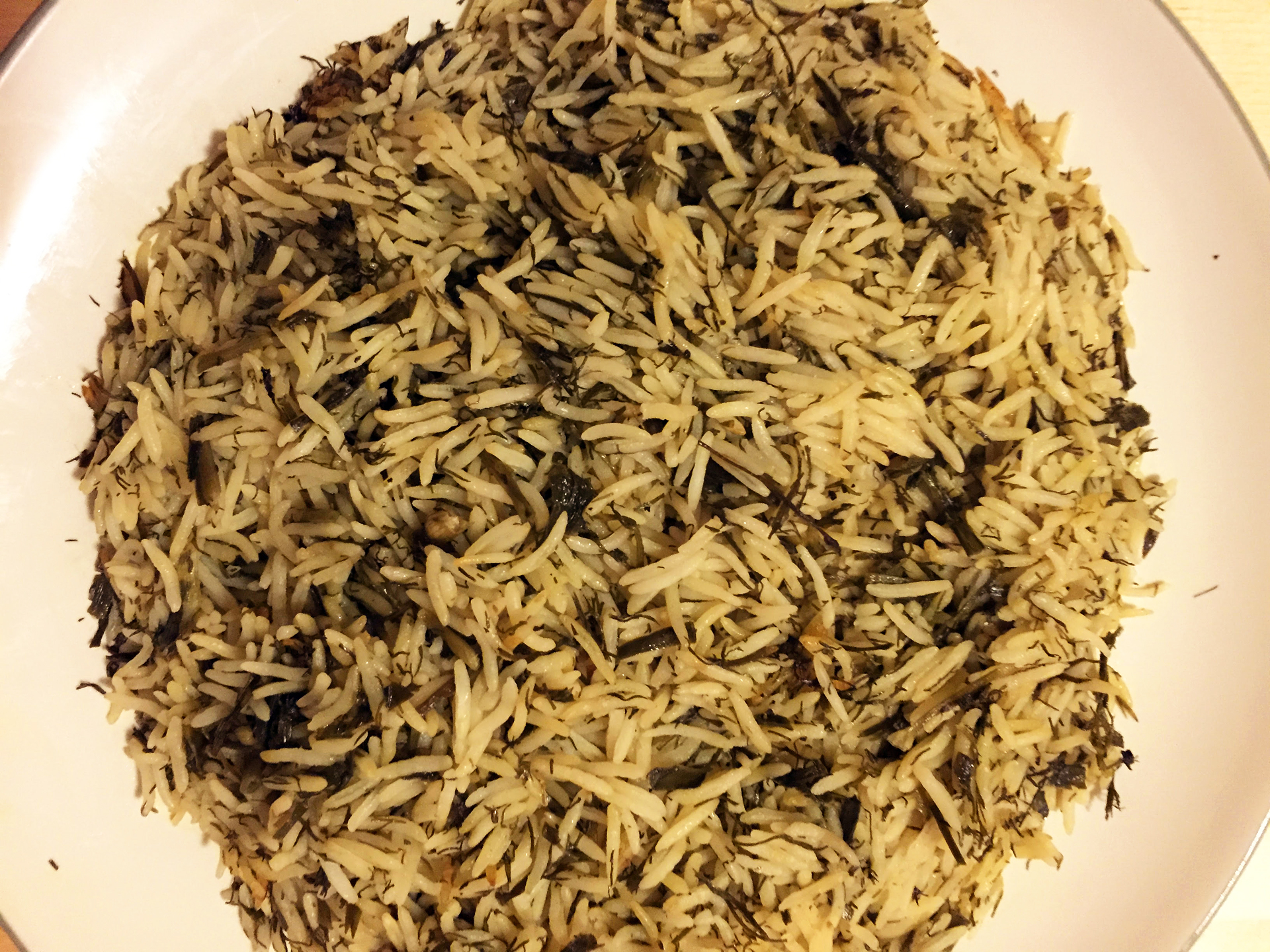
Serves eight people.
Ingredients:
- 4 cups long grain basmati rice
- 2 1/2 cups cilantro, chopped
- 2 cups fresh dill, chopped
- 2 cups parsley (preferably Italian parsley)
- 1/2 cup fresh fenugreek, chopped
- 5 tbsp butter (about 1/2 a stick)
- a couple of pinches of rock salt (or table salt)
- a pinch of saffron
Instructions:
- Put the four cups of rice in a bowl of cold water and mix around with your hand until the water gets milky. Drain the rice and repeat until the water is no longer milky.
- Pour rice into a nonstick pot.
- Cover the rice with about 1 inch of water (about 1/4 of your finger from where the rice begins and the water end).
- Add herbs, butter and salt.
- Bring to a boil, stirring occasionally.
- Once the water boils mostly off, give it one final stir, cover it, lower the heat to low or medium-low, and let cook on low for 20 minutes or until rice is soft.
- grind saffron and mix with a 1/4 cup of hot water. Drizzle on the rice after putting the rice on a large platter to serve.
